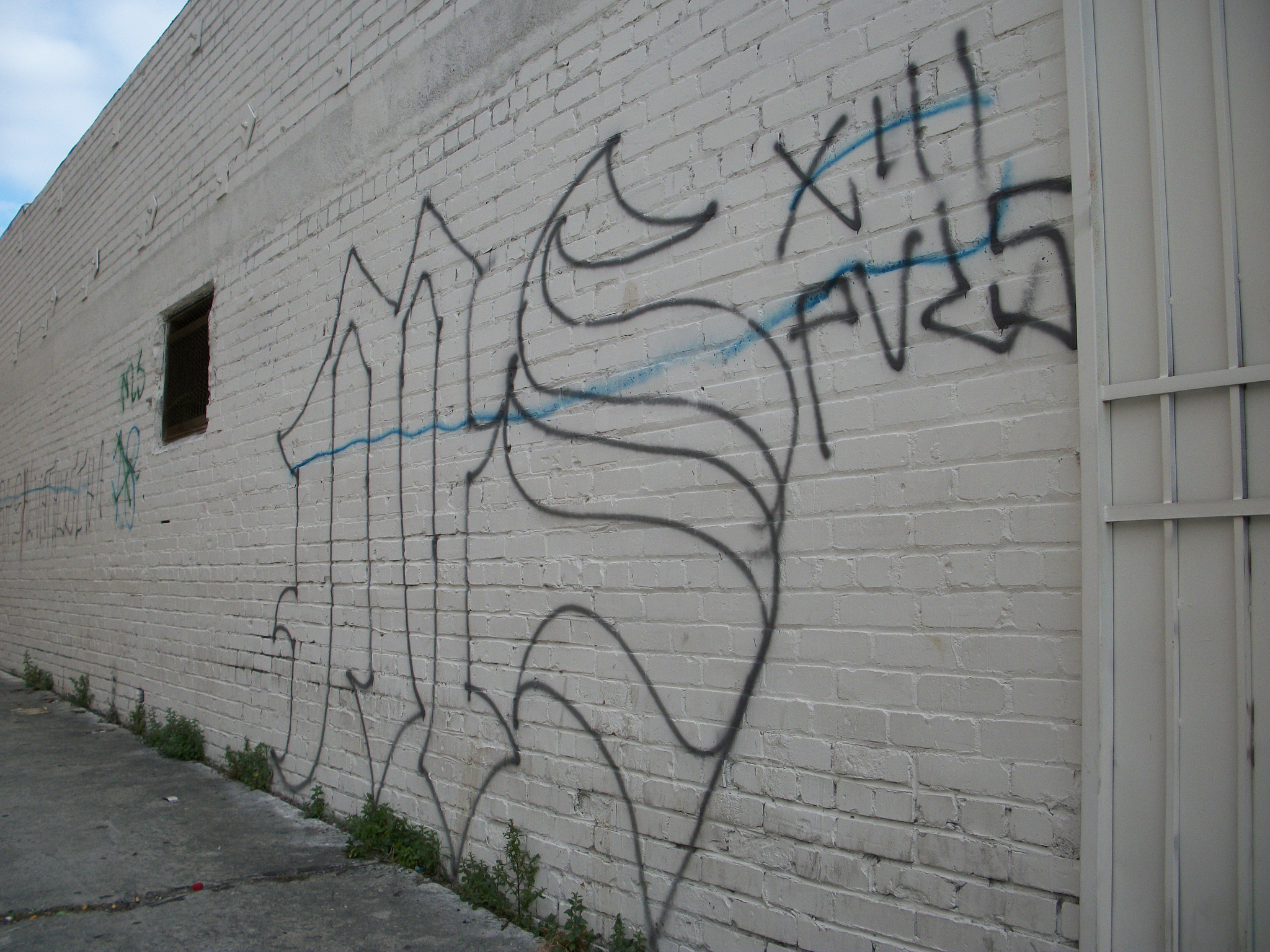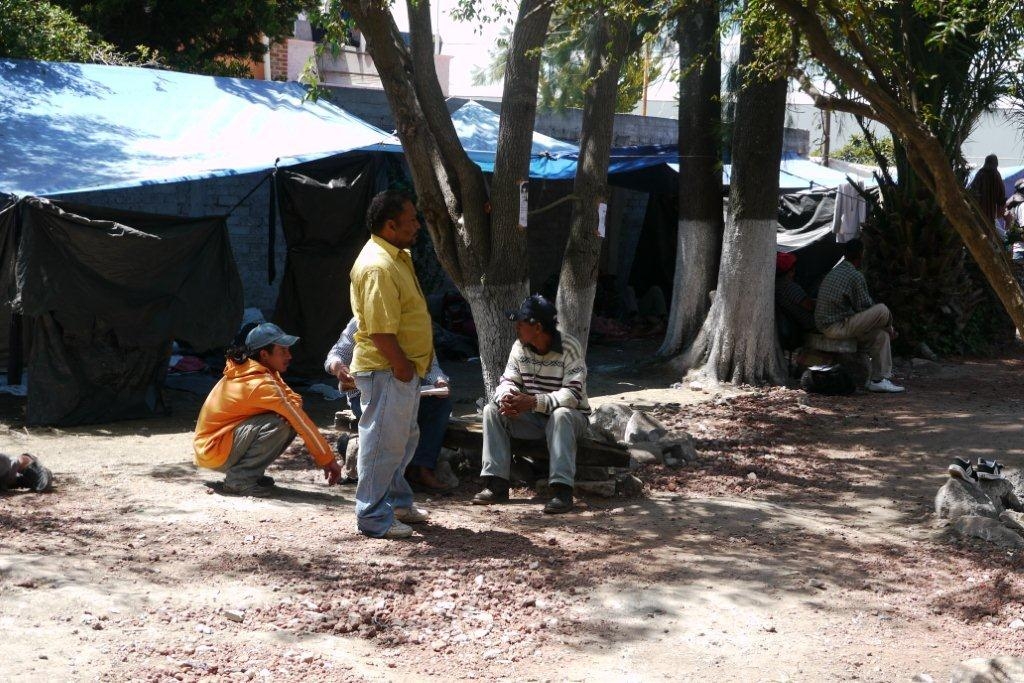Immigration is a topic that elicits fear in some and outrage in others. The fearful mind conjures images of Mexicans crossing the border, stealing jobs, and bringing drugs. The outraged mind conjures images of weak borders and charity given to those deemed un-American. The reality is quite different. Most immigrants who cross the United States’ southern border do not come from Mexico—in fact, more Mexicans are currently leaving the United States than are entering. Rather, it is the Northern Triangle—Honduras, Guatemala, and El Salvador—that supplies 85 percent of Latin American immigrants entering the United States. This emigration is driven in part by deteriorating conditions in the region: besides its coal production and beautiful blue jays, Honduras is primarily known for its extraordinarily high number of homicides. Indeed, the murder rate of its second-largest city, San Pedro Sula, is among the highest in the world, peaking at 187 homicides per 100,000 people in 2013.
Children born in such a land face not only the murder of parents and other family members at the hands of local gangs, but also the problems accompanying extreme poverty, such as lack of education, health resources, and a tenable future. Child labor is commonplace, along with sexual exploitation, trafficking, and child marriage. To live in such a place is to live in constant fear for one’s life. Escape means either joining one of the local mara gangs or emigrating to another land. Therefore, despite the dangers involved, unaccompanied minors and families make the trek to the United States, because they see it as a land of opportunity, or at the very least, as a place with more opportunity than their homeland.
Why the Long Trek?
Like most people, Latin Americans are naturally disinclined to leave their homes; oftentimes, they leave because they must. In interviews with the HPR, Lisa Haugaard of the Latin American Working Group and Maureen Meyer of the Washington Office of Latin America said that it is poverty, fear, and distrust that drive Latin Americans to flee their homes.
The cause of poverty in the Northern Triangle is quite complex, but it can be partly explained by the lack of taxes paid to the government. Workers in the country’s informal job sector, largely from uneducated and poor backgrounds, work simple jobs without paying taxes. Despite meager wages and few protections—two thirds of the people in Honduras live on $2.50 a day—these jobs in the shadows are often the only way to create wealth and to alleviate extreme poverty for many of the poorest in the Northern Triangle. But with less tax revenue available to the government, fewer programs—education, medical care, and infrastructure—become available to the very people who need help the most. It is a harmful cycle that forces governments with less to do more.

MS-13 Grafitti, Los Angeles
With less money at the government’s disposal, law enforcement is often stretched thin, giving rise to crime; in Honduras, 97 percent of murders go unsolved. These murders are often committed by local and international criminal organizations, including the infamous Mara Salvatrucha 13 (MS-13). In the Northern Triangle, their crimes extend far past murder—child prostitution, extortion, and human trafficking, to name a few. This is an everyday reality for the poorest Latin Americans living in these regions, who cannot afford private security or homes in safer areas.
Moreover, to break what is considered the social norm in the local community makes one a target. While LGBTQ activists fought for marriage equality in the United States, their counterparts in the Northern Triangle fought simply to not be murdered. Even children are considered targets by local gangs and MS-13. In 2014, 200 children died from beatings, suffocation, or gun violence in the MS-13 stronghold of San Pedro Sula. Often, children and adolescents are forced into the organization, either by the coercive power of poverty or by threats from the gang itself. Entrance into the gang is violent, with initiations often including a 13-second “beat down,” which at times leads to the death of the initiate. With Northern Triangle governments establishing anti-gang death squads, the careers of these new gang members are often short-lived. To escape this false choice between gang life and crippling poverty, children and adolescents are forced to flee north, oftentimes without parents.
For a variety of reasons, Northern Triangle governments are generally unable to provide the resources necessary to protect endangered children and adolescents. Local police forces are often rife with corruption and act with impunity. According to some journalists in the country, the police often blame the murders of LGBTQ individuals on the victim’s own carelessness. Legal professionals and advocates placed under police protection are often killed anyways; 95 percent of all these murders go unsolved. With such abysmal prospects, immigration is often the only choice for many of the poorest living in the Northern Triangle.
To legally apply for asylum is a difficult process. According to Haugaard, “there are many people who are refugees, who do have right to asylum, and yet who are not perceived by politicians and customs and border patrol officials as people seeking refuge.” Because of this diminished access, these asylum applicants continue to face poverty and crime. Even for those who are recognized as refugees seeking asylum, difficulties remain. The slow-moving, overworked United States immigration system, with its limited visas and strict stipulations, often forces people seeking to move to the United States to escape death and poverty to wait years—sometimes more than a decade—to legally immigrate. Surviving that long in such harsh conditions is far from guaranteed.
Human Smuggling and Human Trafficking
Even crossing into the United States without approval is no small task. Immigrants face a hazardous trek, one that conservative estimates say has led to the deaths of over 6,000 people. Many immigrants from the Northern Triangle employ the services of human smugglers, or coyotes. With the United States investing billions of dollars into border security—the Department of Homeland Security requested an additional $42 Billion for the overall budget in 2016—smugglers have begun to take even more dangerous voyages in order to circumvent tightened security. According to the United Nations Office on Drugs and Crime, because of “more stringent law enforcement, smugglers may use routes or transportation methods that expose immigrants to greater physical and psychological dangers.” This often results in the death of more vulnerable immigrants, typically children and older women, by dehydration and heat stroke. Moreover, as smaller human smuggling operations are slowly taken over by larger drug cartels, immigrants are increasingly subject to rape, murder, and even mass execution. In one instance, 72 people who refused to work for the Los Zetas cartel were lined up and shot in mass. The deaths of people trying to cross the border is a frequent enough occurrence that in Pima County, Arizona, industrial freezers are used to hold the bodies of people who die trying to cross the border.
The greater involvement of criminal organizations, along with their willingness to use violence, has turned the problem of human smuggling into one of human trafficking. With the costs of a border crossing increasing to as much as $1,500 in some places, immigrants are often forced into sweat shops and prostitution in order to repay their debts. Fearing deportation and punishment under law, many of these immigrants are unable to turn to the police for help, both in Mexico and in the United States.
There is a clear link to the rise and strengthening of these smuggling and human trafficking operations and border security; according to the UNODC, a nonfunctioning immigration system coupled with a tighter border increases the demand for high-risk smuggling. With no clear sign of illegal immigration to the United States stopping, prices are sure to rise, and the power of these human smugglers and traffickers is sure to rise along with it.
But what about Mexico?
Getting to the United States from the Northern Triangle requires first traversing Mexico. Such a journey is often hazardous; reports of violence are commonplace, as gangs hold migrants hostage for money. Mass executions are not uncommon. Nor are sexual assault and rape; 80 percent of women crossing Mexico are raped attempting to cross into the United States. The perils of crossing Mexico also stem from the terrain; thousands of miles of desert mean dehydration and exhaustion are met with little medical care. To cross Mexico is essentially to risk death.

Central American migrants, on their way to the United States, stop at a shelter in Mexico.
Decisions by the Mexican government can have dramatic effects on the refugee situation. To seek asylum in Mexico is incredibly difficult. According to Haugaard, the “Mexican Asylum System is very small and is not [providing] asylum to cases [that would merit it].” She states that under the Obama Administration, Mexico was pressured to deport any immigrants at its southern border. Children, however, could apply for asylum through the United States embassy in their country. Under the In-Country Processing Program, a minor in Latin America could apply for asylum if they “had a credible fear, either because of gangs or organized crime.” Although highly restrictive, the program nonetheless offered some children an opportunity for safety.
Under the first executive order of the Trump Administration, this program, and others like it, was frozen. Due to the currently strained relationship between Mexico and the United States, it remains uncertain if the Mexican government will continue the mass deportation of immigrants. If it were to turn a blind eye to the problem, it is possible that border crossing attempts, along with human trafficking crimes, will surge.
Alternatively, the problem may remain localized in Central America. According to Meyer, as the U.S. border becomes more difficult to cross, “more and more citizens of the Northern Triangle nations may choose to stay in Mexico and other nations in the region, particularly Costa Rica and Panama.” The government of Mexico would be faced with problems of job creation, education, and integration for these refugees. For a country facing numerous problems of its own, a renewed refugee crises would be a substantial burden for Mexico.
As Haugaard said, “This problem is not dealt with by walls, it’s not dealt with by harsh immigration policy.” Instead, continued Haugaard, “It’s dealt with [by allowing] people to live in their homes” peacefully in Central America, without fear for their lives. In the meantime, however, the lives of millions of unrecognized refugees depend on immigration policies elsewhere.
Image credit: Flikr / chamo estudio / Walking the Tracks / greensefa
